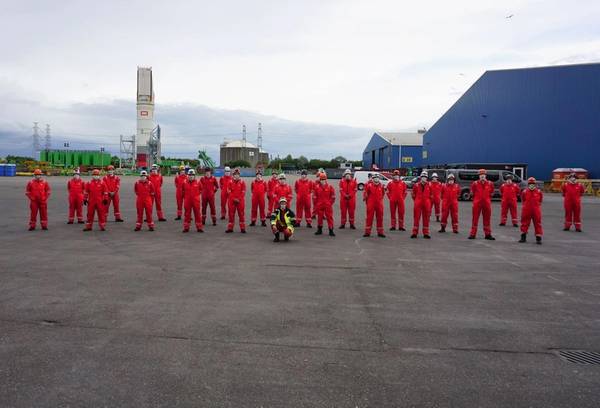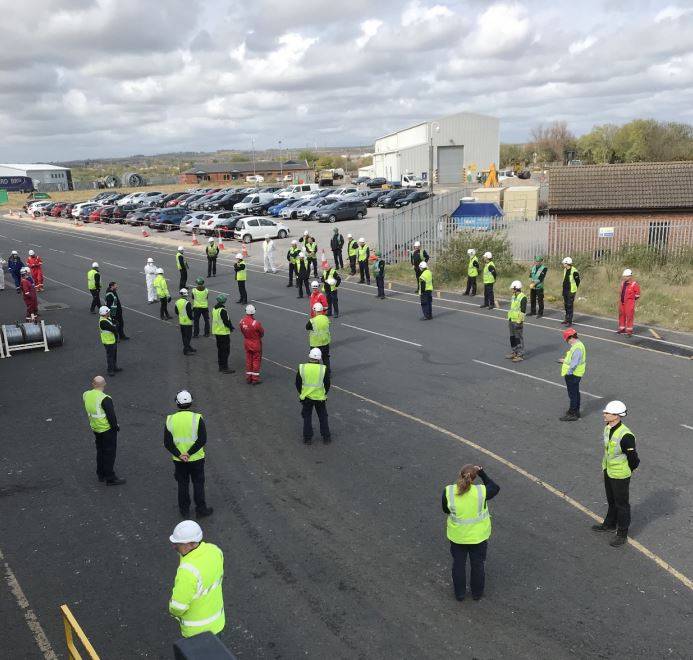
By James Young, CTO at JDR Cables
COVID-19 has turned life upside down. Birthdays are celebrated over Zoom or from the end of a driveway, bars and restaurants stand empty, and many streets are eerily quiet. Yet, we carry on – largely due to the great efforts of health and other frontline workers – and also thanks to our critical energy infrastructure and those that build and maintain it.
In the UK, the energy sector has weathered many a storm and become a byword for engineering and technical expertise. From the North Sea oil and gas sector that still provides 51 percent of UK gas requirements, to the renewable energy sector and the transmission and distribution networks, it is the energy sector that makes it possible for people to work remotely and keeps the lights on in our hospitals.
So, we should be proud of and grateful to these other key workers – and that gratitude must extend to doing everything we can to enable them to do their jobs safely during the pandemic. Here are some examples of what we are doing at JDR Cables to achieve that.
All hands on, six feet apart
There will be no one size fits all approach across sectors or even individual companies. COVID-19 safety needs to be approached at the individual facility and process level in order to be effective. Broadly though, we can group measures to either change process, reducing the number of social interactions, addressing human factors to challenge habits through consistency of communication, and through providing the right personal protective equipment (PPE).
PPE is the most straightforward and should be second nature to anyone used to working in a manufacturing environment or deployed on site (potentially offshore) but applies doubly during a pandemic. Staff – and any visitors – should be supplied with all necessary PPE, whether that be face masks, goggles or snoods to cover the nose and mouth. However, PPE is really the last line of defense. Managers and teams need to work innovatively and think differently about risks and how these could be engineered out.
Then, measures should be taken to reduce social interactions of people in a given area, to reduce transmission risks. This can be achieved in multiple ways, but a business needs to look at all interactions and where these can be minimized. At our facilities, we have adjusted shift start and finish times so that outgoing and incoming groups don’t overlap and we can reduce the risk of congestion in corridors and access doorways, as well as segregating eating areas and staggering break times.

Caption: JDR UK staff holding a minute’s silence last month for NHS workers who have died during the pandemic - Credit: JDR
We have done our best to reduce visitors and sought other ways of communicating and demonstrating project progress. We have implemented new processes for those social interactions that are unavoidable. For example, every cable that leaves our facility is subject to a factory acceptance test (FAT) which normally requires the physical presence of a customer representative to ensure key completion milestones and quality requirements are adhered to. We welcome such visitors and accommodate those key client representatives to our site, however in these times we are, wherever possible, conducting such vital inspection stages remotely and via other methods such as video.
And then there are the subtler, but no less important things, which help strengthen safety culture. Though not sufficient on their own, we have invested in measures such as social distancing lines on the factory floor, signage reminding staff to keep their distance and to wash their hands on arrival, departure and as often as possible in between. We all have to be vigilant and look out for one another, to protect ourselves, our colleagues, and all our families and loved ones. We have found it is all too easy (and all too human) to lean in closer to hear what a colleague is saying against the background noise of machinery, but we have to stop and think about our safety and maintain social distancing, as much as we practically can
There may also be ways to rethink processes to support distancing. For example, can a factory layout be rearranged so that workstations are farther apart? Can a task be rethought to avoid the need for two people working on it simultaneously? In many cases, the answer will be yes. For those when it isn’t – such as with a heavy cable lift that requires two people – it’s crucial that staff are given the right PPE and that time in proximity is minimized and strict separation established immediately upon completion.
Beyond the factory floor
Of course, not all staff will have roles that are 100 percent factory or site-based, or 100 percent office-based. So, are there new processes or technologies that can be adopted to shift the ratio and allow more tasks to be done remotely – as with the FAT inspection?
Can communications be [improved] with clients so that deliveries aren’t clustered, or site-visits coincide with visits from their other suppliers?
And – though the virus itself is rightly front of mind for us all – none of us can ignore the mental toll that this scenario is having. Mental health must be carefully monitored for both remote and physically-present staff – both for its own sake and so that minds can stay focused on good health and safety practice.
Defining critical
I doubt anyone would disagree that keeping power flowing to our homes, for vital businesses and services right now is essential. Hospitals need power, and you could argue that social distancing is far more likely to succeed if people are able to work and entertain themselves remotely.
However, some might question whether to work on tomorrow’s energy projects is critical at the moment.
Though COVID-19 introduces many new uncertainties as to what our societies and economies will look like in future, we are ultimately in the midst of several long-term trends, changing how much energy we need, where we need it and how we produce it.
Offshore wind farms will continue to be built off the UK coast (and they need to be built before we shut down the coal-fired and other fossil fuel power plants they replace); new sources of hydrocarbons will continue to be needed to replace output from mature North Sea wells. These are tomorrow’s critical energy infrastructure assets, which makes them today’s critical construction and manufacturing projects – all the more reason to do our utmost to keep the sector moving while at the same time keeping our people safe.
At JDR, we are constantly looking for further initiatives and improvements to keep our people safe, while helping our clients work tirelessly to keep the lights on. I hope that some of these thoughts can be of use to others, as we look ahead and ensure we all have the energy we need to continue our fight against Coronavirus and safely re-build our global economy for all of our futures.
About the Author:
James Young is Chief Technology Officer at JDR Cable Systems, the global subsea cable supplier and servicer.